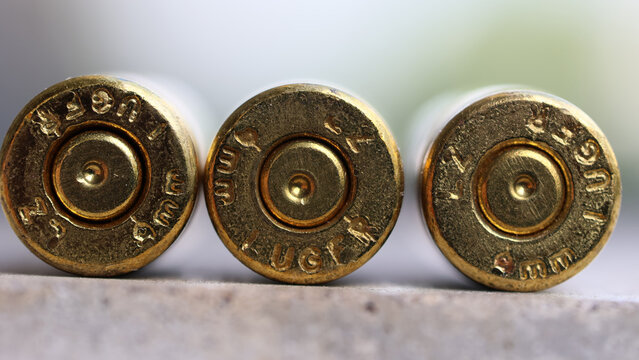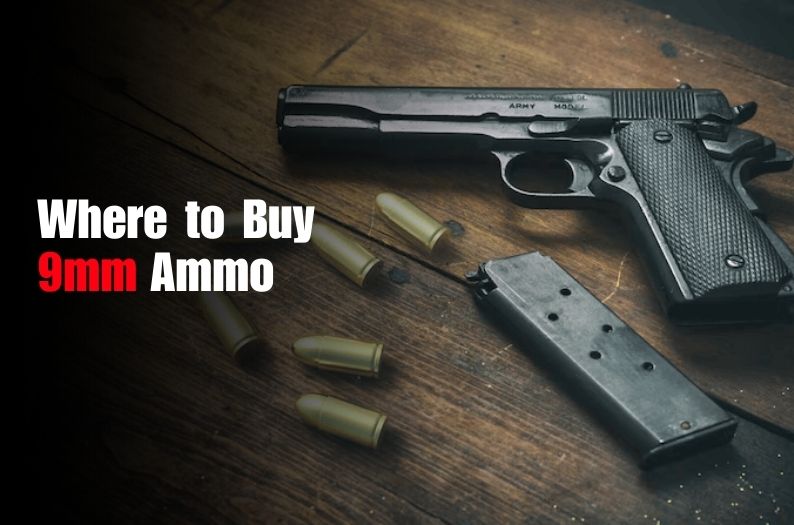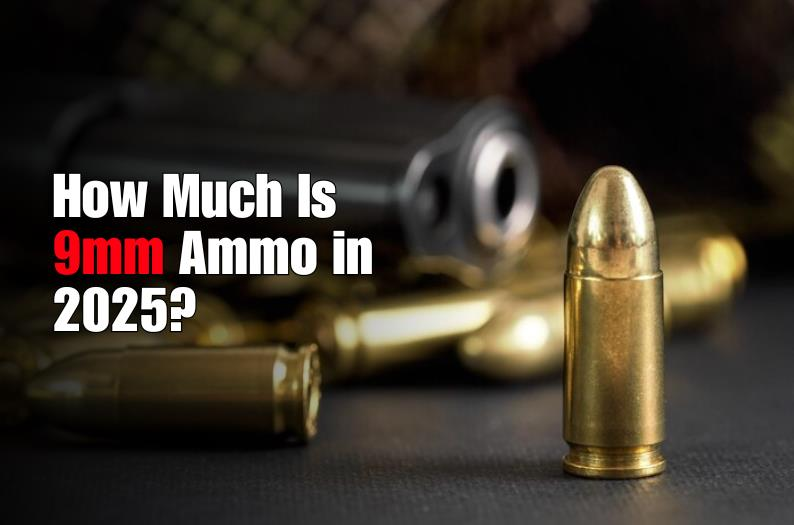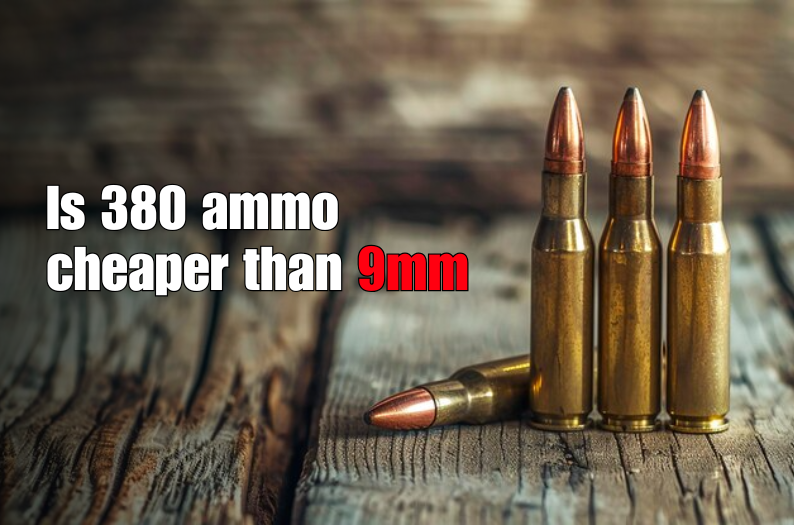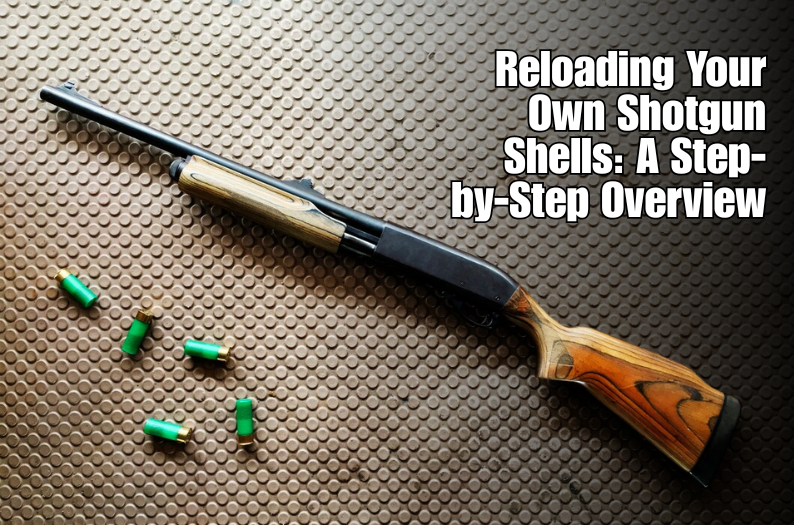The 9mm Parabellum, also known as 9mm Luger, is one of the most widely used handgun cartridges in the world. Its popularity spans both military and civilian applications, making it a common choice for survival scenarios. This article examines whether 9mm ball ammunition is suitable for survival purposes, considering its history, ballistic properties, and practical applications.
Historical Context
The 9mm cartridge was developed by Georg Luger in 1901 and was later adopted by the German Navy in 1904 and the German Army in 1908. Its widespread adoption by military and police forces worldwide is a testament to its effectiveness and reliability. The cartridge's design aimed to provide a balance between stopping power and manageable recoil, making it suitable for semi-automatic pistols and submachine guns.
Global Adoption
- United States: The 9mm became popular in the U.S. military with the adoption of the Beretta M9 in 1985. Its use has extended to various law enforcement agencies due to its effectiveness and the availability of high-capacity magazines.
- Europe: Many European countries adopted the 9mm as their standard military and police cartridge, including Germany, the UK, and Italy.
- Other Regions: The cartridge's global reach extends to Asia, Africa, and Latin America, where it is used by both military and civilian sectors.
Ballistic Characteristics
The 9mm ball ammunition, typically a full metal jacket (FMJ) round, is known for its penetration capabilities and reliability. Here are some key ballistic properties:
- Velocity: The average muzzle velocity of a 9mm FMJ round is approximately 1,150 feet per second (fps), providing a good balance of speed and energy.
- Energy: With an average muzzle energy of around 350 foot-pounds (ft-lbs), the 9mm offers sufficient stopping power for self-defense and tactical scenarios.
- Penetration: The FMJ design allows for deep penetration, which can be both an advantage and a disadvantage depending on the situation. It is effective against barriers but may over-penetrate in soft targets.
Practical Applications in Survival
When considering ammunition for survival, factors such as availability, versatility, and effectiveness are crucial. The 9mm ball ammo meets many of these criteria:
Availability
- Commonality: The 9mm is one of the most produced and stocked calibers worldwide, making it readily available in most regions. This commonality ensures that resupply is more feasible in a survival situation.
- Cost-Effectiveness: Generally, 9mm ammunition is less expensive compared to other calibers like .45 ACP or .357 Magnum, allowing for more extensive stockpiling.
- How much defensive ammunition do some gun owners keep for
their 9mm firearms?
Gun owners have diverse strategies for stocking defensive ammunition for their 9mm firearms. Here's a breakdown based on various perspectives:General Stock Levels
Many gun owners prioritize maintaining a notable quantity of high-quality hollow point (HP) ammunition. This often translates to keeping a few boxes of premium defensive rounds on hand. For some, having about 200 rounds of top-tier HP ammunition provides a sense of security and preparedness.
Mix and Match Approach
Some gun owners adopt a mixed strategy by maintaining a primary supply of high-quality defensive ammo while also stockpiling standard ball ammunition (FMJ). This approach ensures they have plenty of ammo for both training and emergency situations, even if ball ammo isn't ideal for defense. A common practice is to use hollow points for immediate defensive scenarios and keep an ample reserve of FMJ for training and backup purposes.
Prioritizing Training Ammo
Certain individuals focus more on acquiring large quantities of training ammunition. They believe that having a greater volume of FMJ rounds on hand outweighs the need for a smaller stash of defensive ammunition. For them, consistent practice is key to readiness, so stockpiling FMJ, which is more affordable, allows for frequent range sessions.
Supplementing with Handloads
For those who engage in handloading, combining factory-produced defensive rounds with their own crafted HP ammunition is a preferred method. They ensure a steady reserve of premium defensive bullets while supplementing with handloaded rounds to maintain a comprehensive stockpile.
Balanced and Prepared
Overall, the consensus among many gun owners is to strike a balance between quantity and quality. While many aim to keep several hundred rounds of high-quality HP ammunition, they also recognize the value of having a substantial amount of FMJ for practice and backup. This balanced approach ensures they are both well-prepared for defensive needs and capable of maintaining proficiency through regular training.
Versatility
- Firearm Compatibility: The 9mm is compatible with a wide range of firearms, including pistols and carbines, enhancing its versatility in various tactical situations.
- Use Cases: It is suitable for personal defense, hunting small game, and even as a barter item in post-collapse scenarios.
How much ammunition do gun owners typically stockpile for training and self-defense?
How Much Ammunition Do Gun Owners Typically Stockpile for Training and Self-Defense?
When it comes to stockpiling ammunition, gun owners often follow diverse strategies based on their specific needs and preferences. Here's a breakdown based on typical practices:
Defensive Ammunition
Most gun owners keep a modest stock of premium defensive ammunition, usually in hollow point (HP) configurations. This type of ammo is designed to expand upon impact, making it more effective for self-defense.
- Typical Quantity: 1-2 boxes (around 20-50 rounds per box).
- Purpose: Ensures that, in critical situations, the most effective ammo is readily available.
- Insight: It’s a good idea to test at least one box of this ammo to confirm it functions well in your firearm.
Ball Ammunition (FMJ)
Full metal jacket (FMJ) ammunition, also known as ball ammo, is more commonly stockpiled due to its affordability and suitability for training.
- Typical Quantity: Several hundred to several thousand rounds.
- Purpose: Used extensively for practice and training exercises. Also considered a backup for self-defense if HP ammo runs out.
- Perks: Cheaper and widely available, making it easier to stockpile large quantities without breaking the bank.
Specialized Ammunition
Some enthusiasts may also store specialized ammunition for particular firearms such as rifles and shotguns.
- Rifles: Soft point (SP) and hollow point (HP) ammo for precision and defensive scenarios.
- Shotguns: Buckshot and slugs for close-range defense and stopping power.
Training Priorities
While defensive ammo is crucial, many gun owners prioritize having more FMJ ammo for regular training.
- Preference: Many prefer having 2,000 rounds of FMJ over 500 rounds of HP due to the higher frequency of use in training.
- Justification: Regular practice improves proficiency and ensures reliability under stress.
Long-Term Storage
Some gun owners build substantial reserves over time, sometimes thousands of rounds, to ensure long-term readiness.
- Stockpiling Strategy: Watch for deals on ammunition and purchase in bulk when prices are favorable.
- Variety: Include a mix of factory-produced premium HP ammo and self-loaded rounds for economics.
Final Thoughts
Balanced Approach to Ammo Stockpiling
While the specific amounts may vary, the overall consensus is to balance between premium defensive HP ammo for critical use and ample supplies of FMJ for regular training. Adhering to this strategy ensures preparedness without sacrificing practice opportunities.
Effectiveness
- Self-Defense:
The 9mm offers adequate stopping power for self-defense, especially when using modern hollow-point ammunition, which expands upon impact and reduces the risk of over-penetration. As mentioned, FMJ rounds may over-penetrate, which can be a liability in urban environments or situations where bystanders are present.
To understand the performance nuances of different 9mm ammunition types, it's essential to delve into specific scenarios and real-world applications. For instance, premium defensive ammo like 124gr hollow points are highly effective in stopping threats due to their reliable expansion and penetration capabilities. This makes them ideal for self-defense situations, ensuring that the bullet impacts the target without posing additional risks to others.
Real-World Experiences and Situations:
- Hollow
Points (HP):
- Performance: HP rounds are designed to expand upon impact, creating larger wound channels and reducing the chance of over-penetration. This expansion is crucial in self-defense scenarios where stopping the threat quickly is paramount.
- Testing: Law enforcement agencies often test HP rounds against barriers like windshields to ensure they maintain their integrity and expansion. Such rigorous testing ensures that these rounds perform reliably in various conditions.
- Full
Metal Jacket (FMJ):
- Usage: FMJ ammunition is typically used for practice and training due to its lower cost. While it can be used for self-defense, it is not the optimal choice because it tends to over-penetrate, which could inadvertently harm bystanders.
- Practical Application: Despite being less ideal for self-defense, FMJ rounds have been effectively used in real-life situations. For example, FMJ rounds have been capable of stopping large animals and even armed assailants, emphasizing the importance of shot placement over ammunition type.
Practical Advice:
- Stocking Up: It's advisable to keep a mix of both HP and FMJ ammunition. Use HP for self-defense to ensure maximum stopping power and safety, and FMJ for regular practice to maintain proficiency without incurring high costs.
- Testing in Your Firearm: Always test any ammunition in your firearm before relying on it for self-defense. This ensures that the ammo feeds reliably and performs as expected in your specific gun.
In conclusion, while HP rounds are preferable for self-defense due to their expansion and reduced risk of over-penetration, FMJ rounds can still be effective with proper shot placement. Balancing your inventory with both types allows you to be prepared for various scenarios without compromising on safety or training efficiency.
How does bullet placement impact the effectiveness of 9mm ammunition in defensive situations?
Understanding the Impact of Bullet Placement in Defensive Situations
Critical Importance of Bullet Placement
In defensive scenarios, the effectiveness of 9mm ammunition hinges significantly on where the bullet strikes. Superior shot placement can vastly enhance the stopping power of a 9mm round, making it crucial for neutralizing threats effectively.
Factors Influencing Effectiveness
- Vital Organs: Striking vital organs such as the heart, lungs, or brain can incapacitate an attacker swiftly. This immediate impact is often more critical than the caliber of the ammo.
- Central Nervous System: A shot aimed at the central nervous system, including the spine or brain, can paralyze or instantly stop an aggressor. Precision is key for achieving such debilitating effects.
- Major Blood Vessels: Hitting major arteries or veins can cause rapid blood loss, diminishing the threat posed by an attacker within moments.
Training and Accuracy
Adequate training enhances one's ability to place shots accurately under pressure. Practicing with your firearm, understanding its mechanics, and maintaining a steady aim can substantially improve your chances of hitting critical areas.
Balancing Caliber and Placement
While the choice of ammunition—whether it be expanding bullets, full-metal jacket rounds, or hollow points— is important, it is secondary to the placement of the shot. A well-placed shot with standard 9mm ammunition can be more effective than a poorly placed shot with a higher caliber round.
Conclusion
To maximize the defensive capability of 9mm ammunition, focus primarily on honing your accuracy and consistently targeting critical areas. This strategic approach ensures that every shot counts when facing a real threat.
What are some recommendations for maintaining the functionality of 9mm ammunition in adverse conditions?
Recommendations for Maintaining the Functionality of 9mm Ammunition in Adverse Conditions
Proper care and storage of your 9mm ammunition are crucial to ensure it functions reliably, especially in adverse conditions. Here's what you can do to maintain its performance:
1. Keep It Dry
Moisture is the enemy of ammunition. Even the slightest amount can render bullets unusable. Ensure your ammo is stored in a dry, climate-controlled environment.
- Use Silica Gel Packs: These can absorb moisture in your storage area.
- Consider Waterproof Containers: Ammo cans with rubber gaskets can provide an excellent barrier against humidity.
2. Waterproof Your Ammo
If you anticipate exposure to wet conditions, consider adding a layer of protection to the ammunition itself.
- Use Lacquer: Apply a small drop of lacquer at the case mouth and primer. This can create a waterproof seal, preventing moisture from penetrating the cartridge.
3. Regular Inspections
Periodically inspect your ammunition for signs of moisture damage or corrosion. This habit can help you catch potential issues before they affect the functionality of your ammo.
- Look for Discoloration or Corrosion: These are clear indicators that moisture has compromised your bullets.
- Hands-On Checks: Physically feel for any dampness or unusual texture on the ammo surface.
4. Proper Handling
Always handle your ammunition with clean, dry hands. Oils from your skin can attract dirt and moisture, which over time can negatively affect performance.
- Wear Gloves: If handling large quantities, consider wearing gloves to minimize direct contact.
- Immediate Storage After Use: Don't leave ammo exposed for long periods; put it back in its container promptly.
By following these guidelines, you can significantly extend the reliability and longevity of your 9mm ammunition, even under challenging conditions.
What is the importance of shot placement in a self-defense scenario?
The Importance of Shot Placement in a Self-Defense Scenario
In a self-defense situation, precision is everything. Shot placement can be the difference between neutralizing a threat and missing the mark entirely. Here's why shot placement is so crucial:
- Immediate Incapacitation: Hitting vital areas increases the likelihood of stopping an aggressor swiftly. This could mean targeting the central nervous system or major organs, which can incapacitate an assailant almost instantly.
- Efficiency Over Caliber: Regardless of the caliber of your ammunition, if you can't land shots accurately, the power of the round becomes irrelevant. Practicing with your firearm regularly to ensure precision is far more beneficial than relying solely on the stopping power of heavier ammo.
- Legal and Ethical Considerations: In defensive situations, ensuring that each shot counts reduces the risk of stray bullets harming innocent bystanders. Precision minimizes legal complications and aligns with ethical responsibilities.
- Adaptability: Practicing shot placement with different types of ammunition is valuable. While hollow points may be ideal for home defense to avoid over-penetration, ball ammo can be effective for outdoor scenarios where collateral damage is less of a concern. Mastery of shot placement with various ammo types ensures versatility in different environments.
Tips for Improving Shot Placement
- Regular Practice: The more you practice, the better your muscle memory and instinctive shooting skills will become.
- Focus on Vital Areas: Training to aim consistently at critical zones ensures higher efficiency.
- Utilize a Variety of Ammo: Familiarize yourself with both practice rounds and defensive ammo to understand how each affects your shooting.
In summary, shot placement is not just about where you hit—it's about how effectively you neutralize a threat while maintaining control and precision. This vital skill, honed through consistent practice, adaptable ammunition choices, and focused training, is crucial in any self-defense scenario.
- Training: Due to its manageable recoil, the 9mm is ideal for training purposes, allowing users to maintain proficiency without excessive wear on their firearms.
What are some personal experiences shared by gun owners regarding 9mm ammunition in defensive situations?
Personal Experiences with 9mm Ammunition in Defensive Situations
9mm ammunition is often debated in terms of its effectiveness for self-defense. Many gun owners have shared compelling personal stories that highlight its performance in real-life scenarios.
One individual recounted a harrowing encounter where they faced an assailant. The attacker mistakenly believed the defender was using a more potent caliber, but the defender's 9mm handgun sufficed. The critical factor was accurate shot placement, which neutralized the threat effectively.
In another scenario, a gun owner faced an unusual adversary: a 1000-pound feral cow, horns intact, that invaded their hunting camp at night. The cow charged aggressively, leaving no room for error. A single well-placed 9mm round to the animal's forehead from 20 feet away dropped it instantaneously. The individual credited their success to consistent practice and the precision of the shot.
Similarly, another person had to humanely euthanize a severely injured 1200-pound horse. Using a 9mm handgun, one precise shot ensured a quick and humane end to the animal's suffering. This experience reinforced their belief in the importance of shot placement over the type of ammunition.
These anecdotes underscore a common theme: while debates continue over various calibers, the ability to practice regularly and achieve precise shot placement in critical moments is paramount. For these individuals, 9mm ammunition proved to be more than capable in high-stress defensive situations.
What training and practice tips are suggested for improving proficiency with 9mm firearms?
Training and Practice Tips for Improving Proficiency with 9mm Firearms
Choose the Right Firearm
- Ergonomic Fit: Ensure the firearm fits comfortably in your hand. An ergonomic grip enhances control and reduces fatigue.
- Reliability: Select a firearm known for its reliability. Consistent performance is crucial for effective training.
Master the Basics
- Regular Training: Commit to regular practice sessions. Consistency reinforces muscle memory and builds foundational skills.
- Accurate Shooting: Focus initially on shooting accurately. Perfect your aim before introducing additional variables.
Enhance Your Skills
- Speed and Precision: Once you can shoot accurately at a steady pace, work on increasing your shooting speed while maintaining accuracy.
- Dynamic Shooting: Incorporate movement into your practice. Learn to shoot accurately at speed while on the move.
Advanced Techniques
- Situational Drills: Simulate real-world scenarios to improve your ability to respond under pressure.
- Varied Environments: Practice in different settings to adapt to various potential shooting situations.
By following these training tips, you'll develop a well-rounded skill set that enhances both your shooting accuracy and responsiveness with a 9mm firearm.
What are some recommended hollow point (HP) bullets for 9mm ammunition?
Recommended Hollow Point Bullets for 9mm Ammunition
Choosing the right hollow point (HP) bullets for your 9mm ammunition can make a significant difference in performance and reliability. Here are a few options to consider:
Premium Options
- Gold Dot: Known for its reliable expansion and penetration, Gold Dot bullets offer consistent performance, even though they tend to be on the pricier side.
- Hydra-Shok: These bullets are designed to achieve maximum impact and deeper penetration, making them a popular choice among enthusiasts.
Cost-Effective Choices
- Hornady XTP: Ideal for those who prefer to handload their ammunition, Hornady XTP bullets are known for their versatility and affordability.
- Federal HST: With excellent expansion and weight retention, these bullets provide a cost-effective alternative without compromising on quality.
General Recommendations
- 115 JHP: For those looking to keep a variety of ammunition on hand, 115-grain JHP factory loads are a reliable and widely available choice.
By considering these options, you can ensure that your 9mm ammunition is both effective and tailored to your specific needs.
Expansion Reliability:
What is the significance of ensuring reliable expansion in 9mm defensive ammunition?
The Importance of Reliable Expansion in 9mm Defensive Ammunition
When considering the effectiveness of 9mm ammunition for personal defense, one crucial factor stands out: reliable bullet expansion.
Why Expansion Matters
- Stopping Power: An expanding bullet creates a larger wound channel, which can stop an aggressor more effectively than a non-expanding Full Metal Jacket (FMJ) round.
- Tissue Damage: The expanded bullet causes more tissue damage and blood loss, increasing the likelihood of incapacitating an assailant quickly.
- Penetration Control: Expanding bullets are designed to stay within the target, reducing the risk of over-penetration and collateral damage.
FMJ vs. Hollow Point
- FMJ Rounds: While FMJs are typically used for target practice due to their lower cost, they are not ideal for defense. Their inability to expand means they can pass through a target without causing sufficient damage to stop an immediate threat.
- Hollow Point Rounds: These are designed to expand upon impact, making them the preferred choice for defensive situations. The expansion mechanism ensures maximum damage and stopping power.
Optimal Choices for Defensive Use
For reliable performance, it's essential to choose high-quality hollow-point ammunition. Popular options include:
- 115-grain and 124-grain hollow points
- +P variants for added velocity and energy
These options offer a balance between expansion, penetration, and manageable recoil.
Conclusion
In summary, using expanding bullets in a 9mm defensive firearm is indispensable for maximizing stopping power and minimizing the risk of over-penetration. Hollow-point ammunition is a superior choice, providing reliable expansion and enhanced defensive capabilities. Always ensure your defensive rounds are of high quality to maintain effectiveness in critical situations.
Considerations for Survival
While the 9mm ball ammo has many advantages, there are considerations to keep in mind:
- Penetration Concerns: As mentioned, FMJ rounds may over-penetrate, which can be a liability in urban environments or situations where bystanders are present.
- Alternatives: In some cases, hollow-point or specialized defensive rounds may be preferable for self-defense to mitigate over-penetration risks.
- Balancing Ammunition Types:
How do gun owners recommend balancing the quantity of FMJ and JHP ammunition in their stockpile?
When it comes to stocking up on ammunition, gun owners often face the dilemma of how to balance Full Metal Jacket (FMJ) and Jacketed Hollow Point (JHP) rounds. Here are some guidelines based on common practices:
Training vs. Practical Use
- Training Ammo: Many gun owners prioritize having a larger supply of FMJ ammunition for training purposes. FMJ rounds are generally more affordable, making them ideal for regular practice sessions at the range. The consensus is that being proficient with your firearm is crucial, so having ample FMJ ammo helps ensure you can train consistently.
- Defensive Use: For self-defense and home protection, JHP rounds are preferred due to their superior stopping power and reduced risk of over-penetration. Gun owners often keep their primary defense weapons loaded with JHP ammo but practice with FMJs.
Quantity Recommendations
- Ratio: A common recommendation is to maintain a ratio where your stockpile consists of about 70% FMJ and 30% JHP. This allows for plenty of practice ammo while still having a significant amount of JHP rounds ready for defensive scenarios.
- Minimum Stock: Some suggest having at least 200 rounds of JHP on hand for each defensive firearm. This is considered sufficient for most self-defense needs without overwhelming your storage space.
Specialty Situations
- Emergency Preparedness: In a survival or emergency situation, some gun owners advocate for a larger stockpile of FMJ rounds, mainly due to their cost-efficiency and versatility. However, it’s equally stressed that having enough JHP ammo for defensive roles remains a priority.
- Regular Load Changes: While FMJ is often used for everyday activities or less critical roles, it's recommended to swap out your FMJ with JHP when you expect to be in high-risk scenarios or environments where over-penetration could be a concern.
Conclusion
Ultimately, the balance between FMJ and JHP ammunition in a gun owner’s stockpile depends on their individual practices and needs. Prioritizing training with FMJ while ensuring a reliable supply of JHP for defensive purposes strikes a well-rounded approach, catering to both skill development and practical readiness.
What are the considerations for using a carbine in the same caliber as a pistol?
Considerations for Using a Carbine in the Same Caliber as a Pistol
Extended Range and Accuracy
A carbine chambered in the same caliber as your pistol can significantly enhance your shooting capabilities. While it won't match the ballistic performance of calibers like .223 or 7.62x39, it can extend both the effective and accurate range of a pistol round. This proves particularly beneficial in scenarios requiring more precision and distance than a pistol alone can offer.
Magazine Compatibility
Opting for a carbine that uses the same magazines as your pistol can streamline your gear setup. This compatibility minimizes the need to carry different types of ammunition and magazines, making it a convenient and practical choice. It's essential, however, to confirm compatibility based on specific models and manufacturers.
Versatility in Usage
Having a carbine in the same caliber as your pistol opens up a range of tactical and practical scenarios. For instance, if you're in a situation where quick target reacquisition is vital, the carbine's improved stability and increased sight radius can offer significant advantages. Additionally, this combination can be ideal for home defense, recreational shooting, and certain hunting situations.
Training and Familiarity
Using a carbine and pistol with the same caliber allows for more seamless training. The muscle memory developed with one firearm can easily translate to the other. This can improve your overall proficiency and confidence in handling both weapons.
Ammunition Efficiency
Carrying a single caliber of ammunition simplifies logistics, whether you're heading to the range or preparing for an extended outing. This efficiency not only reduces costs but also simplifies reloading processes and inventory management.
Summary
In conclusion, a carbine chambered in the same caliber as your pistol offers notable benefits such as extended range, improved accuracy, magazine compatibility, and enhanced versatility. By streamlining your equipment and training, you can maximize both convenience and performance.
Advantages of 9mm Ball Ammo for Survival
There are several compelling reasons to consider 9mm ball ammo for survival:
- Versatility: The 9mm is suitable for a wide range of situations. It's effective for self-defense against both humans and smaller animals, while its manageable recoil allows for accurate target acquisition.
- Availability: 9mm is one of the most widely available calibers on the market. Finding ammunition in a survival scenario may be challenging, but 9mm is more likely to be readily available compared to less common calibers.
- Common Platform Compatibility: A vast array of pistols are chambered for 9mm, giving you a wide selection to choose from. This allows you to find a pistol that fits your specific needs and preferences.
- Ammo Capacity: 9mm pistols typically have higher magazine capacities than larger calibers. This allows you to carry more rounds without adding excessive weight to your survival gear.
- Recoil Management: The 9mm's lighter recoil makes it easier to control, especially for those with less shooting experience. This allows for faster follow-up shots and more accurate fire in stressful situations.
- By considering these factors, you can better understand the debate surrounding the adequacy of 9mm ammunition for SHTF scenarios and make informed decisions about your survival strategy.
Conclusion
In conclusion, 9mm ball ammunition is a viable option for survival scenarios due to its widespread availability, cost-effectiveness, and versatility. It is suitable for a range of applications, from self-defense to training and small game hunting. However, users should consider the potential for over-penetration and evaluate the specific needs of their survival plan. For those looking to purchase 9mm ammunition, consider visiting ammunitionsforsale.com for a wide selection of options to suit your needs.
- #9mm ammo availability
- #9mm ammo cost
- #9mm ammo purchase
- #9mm ammo stockpiling
- #9mm ammo versatility
- #9mm ball ammo survival
- #9mm ballistic properties
- #9mm cartridge history
- #9mm FMJ uses
- #9mm for barter
- #9mm for self-defense
- #9mm for small game
- #9mm for training
- #9mm global adoption
- #9mm Luger history
- #9mm penetration issues
- #9mm survival scenarios
- #9mm tactical applications
- #9mm vs other calibers
- #best 9mm ammo for prepping


